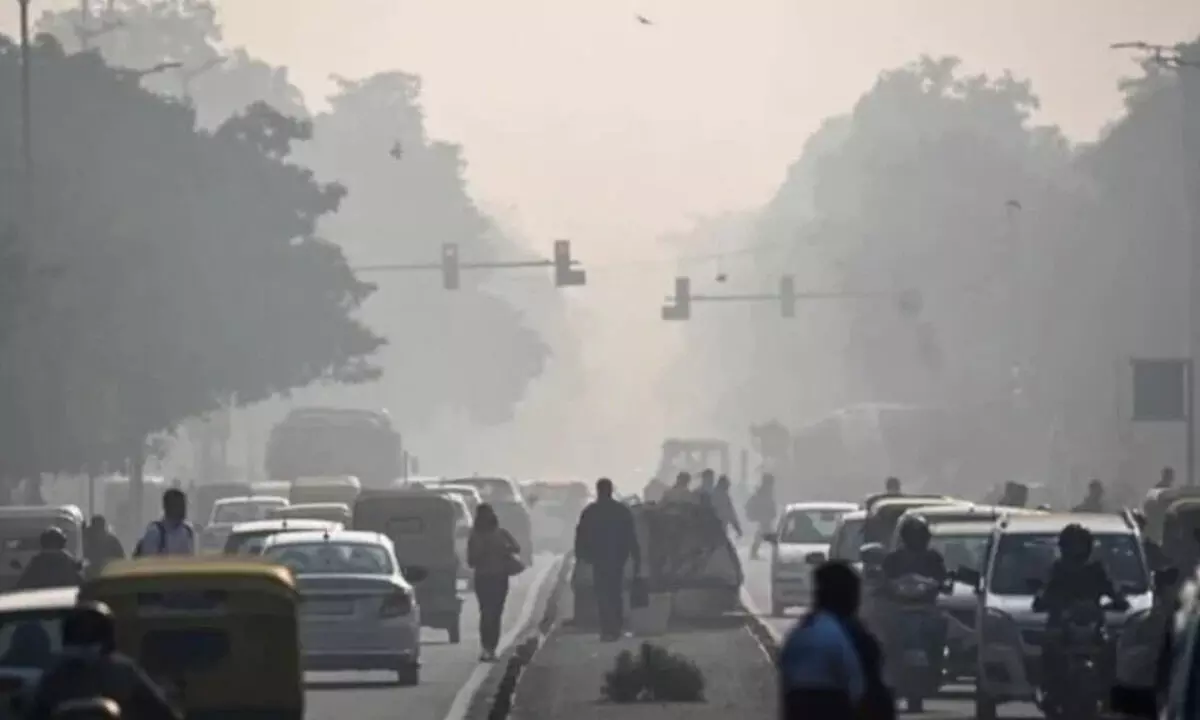Live
- Hyderabad: Govt out to remove electric poles, transformers on roads across city
- KCR goes into huddle with State legal eagles
- Formula E race: KTR to be arrested soon?
- Film fraternity stands with Allu Arjun
- New CUAP campus faces security challenges
- HC grants protection to Allu Arjun from arrest
- Stampede victim’s husband ready to withdraw case against Allu Arjun
- Tomatoes price falls drastically to Rs 1 per kg at Pathikonda agri market
- Police clarify on Sandhya Theatre mgmt’s letter, deny allegations of misbehaving with Allu Arjun
- Ecotourism offers career opportunities
Just In
Hyderabad’s PM 2.5 levels are over eight times WHO ‘safe limits’: Greenpeace


Hyderabad’s PM 2.5 levels are over eight times WHO ‘safe limits’: Greenpeace
Studies reveal exposure to severe air pollution increases the likelihood of premature death and many medical conditions, including asthma, preterm birth, low birth weight, depression, schizophrenia, diabetes, stroke, and lung cancer
Hyderabad: Greenpeace India’s latest report on air pollution, ‘Spare the Air’, reveals alarming levels of air pollution in Hyderabad and ten other cities across the country. The year-long study, which analysed data from September 2021 to September 2022, revealed that pollution levels were dangerously and persistently higher than the latest World Health Organisation (WHO) guidelines.
Hyderabad was found to have an annual PM2.5 concentration of 40.91 μg/m3 , which is 8.2 times higher than the safe levels (5 μg/m3) set by the WHO. This alarming level of PM2.5 concentration was recorded on 366 days, or 100% of all days on record.
Similarly, the city’s annual PM10 concentration was found to be 57.84 μg/m3, which is 3.9 times higher than the safe levels(10 μg/m3); these alarming levels were recorded on 232 days or 97.89% of all days on record.
The city’s annual NO2 concentration was also found to be 17 μg/m3, which is 1.7 times higher than the safe levels.
The city recorded such alarming levels of NO2 concentration on 258 days or 76.56 of all days on record.
To amplify these alarming statistics, Greenpeace volunteers displayed a banner that read “Spare Our Air” on Tank Bund Road and near the GHMC office. Demanding the municipality play a more active role in climate action, G Amruta S Nair, campaigner,said “Municipalities have been a major missing link in the movement against climate change. Urban local bodies can introduce innovative policies on ground that focus on travel demand management. This can include measures like establishing low-emission zones in city centres and levying congestion charges on big polluters. Such policies have proven to be effective in other parts of the world and should be implemented as a first step.”
Congestion charges are fee that drivers have to pay to enter or drive in a specific area during peak hours. This policy measure found some success in cities like London, where traffic congestion decreased by 30 per cent, transit by bus rose by 33 per cent, and carbon emissions were reduced by 30 per cent.
Raagini Bellary, another volunteer, said “Hyderabad requires a reliable public transport system , one whose efficiency makes it an easy first choice of mobility. I don’t see any other way to reduce these frightful numbers unless people want to use public transit.
It is critical that the government and policymakers take appropriate steps to address this issue and establish long-term solutions.”
In 2021, With increasing evidence of air pollution affecting different aspects of health. WHO
conducted a systematic review adjusting all the air quality guidelines levels downwards, warning that exceeding the new air quality guideline levels is associated with significant risks to health. Studies have revealed that exposure to severe air pollution increases the likelihood of premature death and many medical conditions, including asthma, preterm birth, low birth weight, depression, schizophrenia, diabetes, stroke, and lung cancer.

© 2024 Hyderabad Media House Limited/The Hans India. All rights reserved. Powered by hocalwire.com






